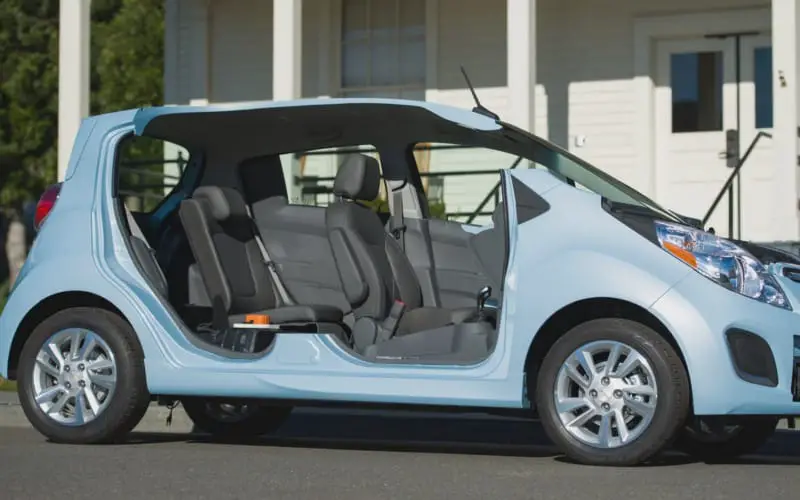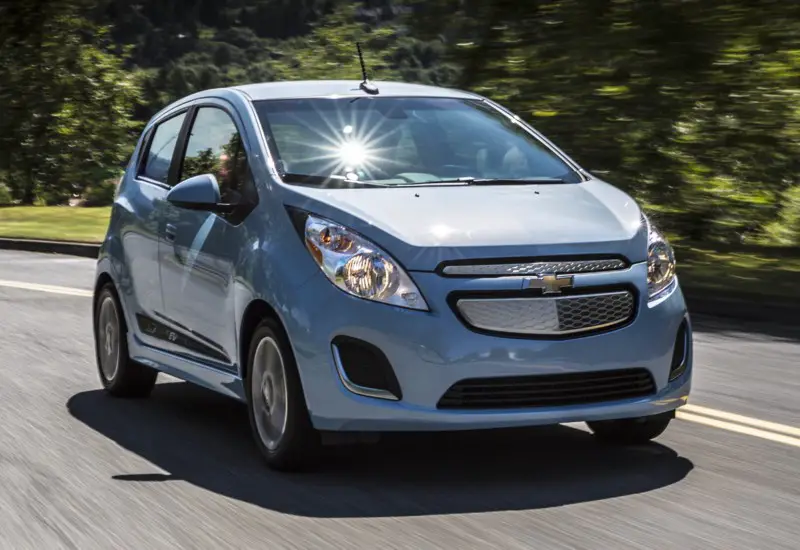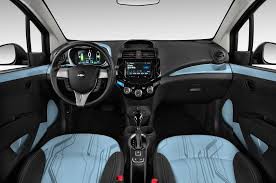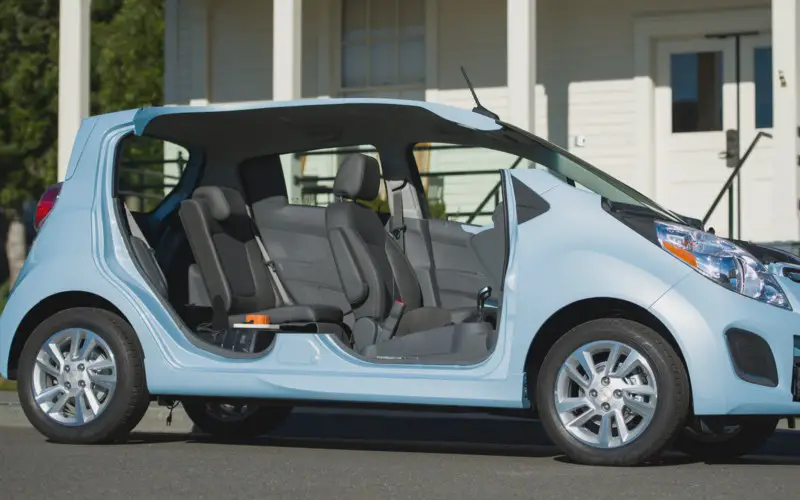Chevrolet Spark EV
Chevrolet Spark EV is an electric vehicle powered by a 105-kilowatt electric motor (140 horsepower and 327 pound-feet of torque). Power…


Chevrolet Spark EV is an electric vehicle powered by a 105-kilowatt electric motor (140 horsepower and 327 pound-feet of torque). Power for the motor comes from an 18.4-kWh lithium-ion battery pack. It takes the Spark EV seven hours to recharge at 240 volts, which is considerably longer than other similarly priced EVs. If you’re only able to plug into a 110-volt outlet, the process could take as long as 20 hours. An optional SAE combo charger promises quicker turnaround times (up to 80 percent charge in 20 minutes and a full charge in 45 minutes) but only if you have easy access to a faster DC charger. Energy consumption at 28 kWh used per 100 miles which is slightly more frugal than most rivals.It accelerates from zero to 60 mph in a quick 7.5 seconds against Chevrolet’s estimate of 7.2 seconds.
Before the Bolt EV arrived with a 238-mile driving range, Chevrolet’s sole electric vehicle was the Spark EV, which was based on the previous-generation Spark city car. On a single charge the Spark EV could travel up to 82 miles. Powering the subcompact Chevrolet Spark EV was an electric motor rated originally at 140 hp and 400 lb-ft of torque and backed by a 21-kWh lithium-ion battery. However, the motor’s torque rating was quietly scaled down to 327 lb-ft after the 2014 model year.
It spins out 105 kW (140 horsepower) and a strong 400 lb-ft of torque. The Spark EV can reach 60 mph in fewer than eight seconds ,the Spark EV and its 21-kWh lithium-ion battery pack most resemble the Honda Fit EV, with enough additional power to shave most of a second off the Honda’s 0 -60 time. The Spark EV isn’t exactly swift when it comes to replenishing its batteries. Charging from a standard 110-volt outlet can take up to 20 hours, while sipping from a 240-volt outlet requires about seven hours. The latter is still within the window of most overnight home-charging scenarios, but it’s still something to consider. The Spark EV uses a 3.3-kilowatt on board charger while most competitors offer faster 6.6-kW chargers. Fortunately the Spark EV offers a DC fast-charge option, which can replenish 80 percent of the battery in about 20 minutes.
Chevrolet Spark EV is an all-electric, subcompact, four-door hatchback with seating for four. There are two trim levels, 1LT and 2LT, differentiated only by minor upgrades in interior trim.Standard equipment for the 1LT includes 15-inch alloy wheels, EV-specific aerodynamic bodywork, key less ignition and entry, remote start, cruise control, air-conditioning, power windows/side mirrors/door locks, a height-adjustable driver seat, heated front seats, a 60/40-split folding rear seat and a tilt-only steering wheel. Electronic features include a 7-inch touchscreen, OnStar telematics, in-car WiFi (4G LTE), Bluetooth phone and audio connectivity, smartphone app integration, Siri Eyes Free voice-recognition capability and a six-speaker sound system with satellite radio, an auxiliary audio jack and a USB/iPod interface.
The 2LT trim adds leatherette premium vinyl upholstery and a leather-wrapped steering wheel.A DC quick charger is optional for either trim level. Connected to the proper power source, a Spark EV fitted with this option can recharge its batteries to 80 percent of capacity in 20 minutes, Chevy says.
Safety
Standard safety features for the 2016 Chevrolet Spark EV include antilock disc brakes, traction and stability control, front-seat side airbags, side curtain airbags, rear-seat side airbags and front-seat knee airbags. OnStar’s services include automatic crash notification, roadside assistance, remote door unlocking and stolen vehicle assistance.
Interior

The interior of the 2016 Chevrolet Spark EV is minimalist at best, but there’s a refreshing simplicity to the dashboard’s clean lines, the unique instrument cluster and the large central touchscreen.
The Spark EV’s gauges differ from the conventional Spark’s to better suit the data unique to electric propulsion. Simple graphics illustrate the battery pack’s state of charge and remaining driving range, for example. The standard MyLink touchscreen infotainment system features sharp graphics, intuitive menus and strong smartphone app integration that includes Internet radio, text message translation, voice commands and available navigation. Like similar systems, however, the screen sometimes fails to register touch inputs, which can be frustrating.
Thanks to the Spark’s tall roof, the cabin feels spacious and roomy, especially for those up front. The front seats are comfortable enough to sit through 82 miles of range with the lack of a telescoping steering wheel the only real drawback.
Those in the two-passenger rear seat also enjoy a refreshing amount of headroom, but there isn’t an abundance of legroom or hip room. The rear seat backs offer a 60/40 split, but because of battery packaging, the seats don’t fold fully flat. The Spark EV offers 9.6 cubic feet of cargo space behind the rear seats, and folding them provides 23.4 cubic feet of total capacity.

The Spark EV is swifter in its performance, however. It’s one of the quicker electric cars you need just 7.5 seconds to reach 60 mph. Its size and weight distribution also make it surprisingly adept when the road twists and turns.Comparing to other EVs like Nissan Leaf it is well worth checking out. It’s slower, but offers a roomier cabin, similar range and well-established reliability. We also recommend the sporty Ford Focus Electric, the Volkswagen e-Golf or, for those in California, the Fiat 500e.




